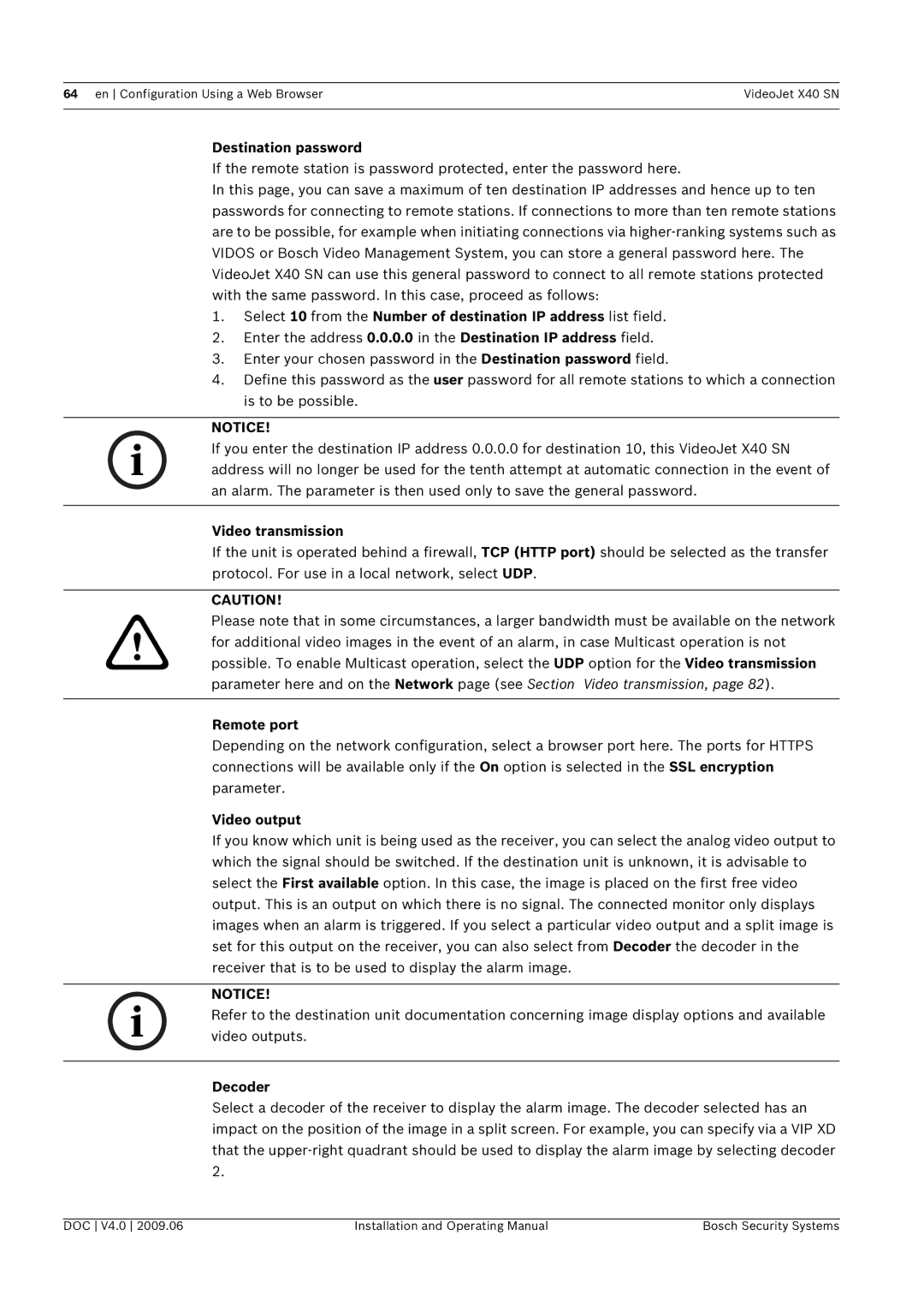
64 en Configuration Using a Web Browser | VideoJet X40 SN |
|
|
Destination password
If the remote station is password protected, enter the password here.
In this page, you can save a maximum of ten destination IP addresses and hence up to ten passwords for connecting to remote stations. If connections to more than ten remote stations are to be possible, for example when initiating connections via
1.Select 10 from the Number of destination IP address list field.
2.Enter the address 0.0.0.0 in the Destination IP address field.
3.Enter your chosen password in the Destination password field.
4.Define this password as the user password for all remote stations to which a connection is to be possible.
NOTICE!
i | If you enter the destination IP address 0.0.0.0 for destination 10, this VideoJet X40 SN |
| |
| address will no longer be used for the tenth attempt at automatic connection in the event of |
| an alarm. The parameter is then used only to save the general password. |
|
|
Video transmission
If the unit is operated behind a firewall, TCP (HTTP port) should be selected as the transfer protocol. For use in a local network, select UDP.
CAUTION!
Please note that in some circumstances, a larger bandwidth must be available on the network
!for additional video images in the event of an alarm, in case Multicast operation is not possible. To enable Multicast operation, select the UDP option for the Video transmission
parameter here and on the Network page (see Section Video transmission, page 82).
Remote port
Depending on the network configuration, select a browser port here. The ports for HTTPS connections will be available only if the On option is selected in the SSL encryption parameter.
Video output
If you know which unit is being used as the receiver, you can select the analog video output to which the signal should be switched. If the destination unit is unknown, it is advisable to select the First available option. In this case, the image is placed on the first free video output. This is an output on which there is no signal. The connected monitor only displays images when an alarm is triggered. If you select a particular video output and a split image is set for this output on the receiver, you can also select from Decoder the decoder in the receiver that is to be used to display the alarm image.
NOTICE!
i Refer to the destination unit documentation concerning image display options and available video outputs.
Decoder
Select a decoder of the receiver to display the alarm image. The decoder selected has an impact on the position of the image in a split screen. For example, you can specify via a VIP XD that the
DOC V4.0 2009.06 | Installation and Operating Manual | Bosch Security Systems |
